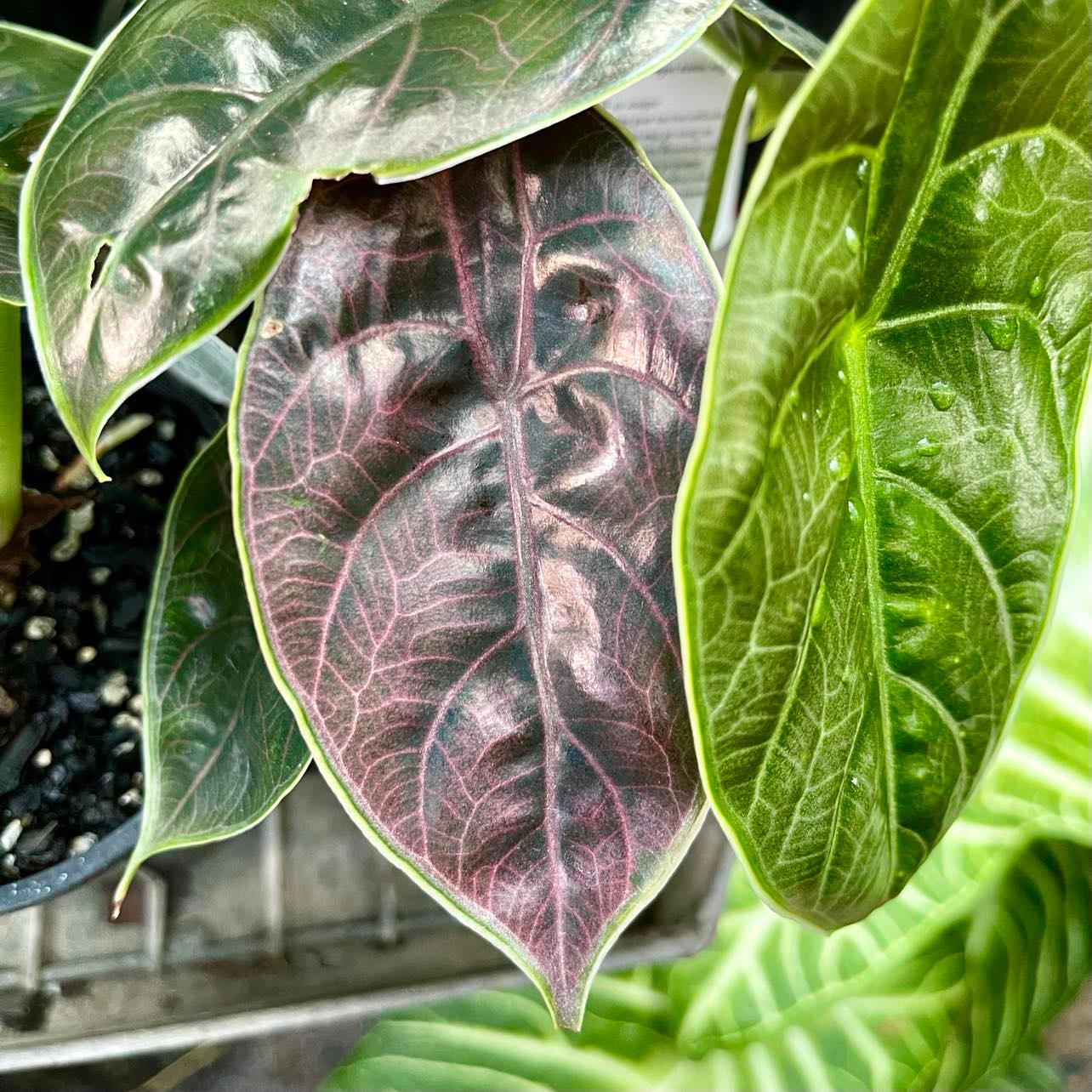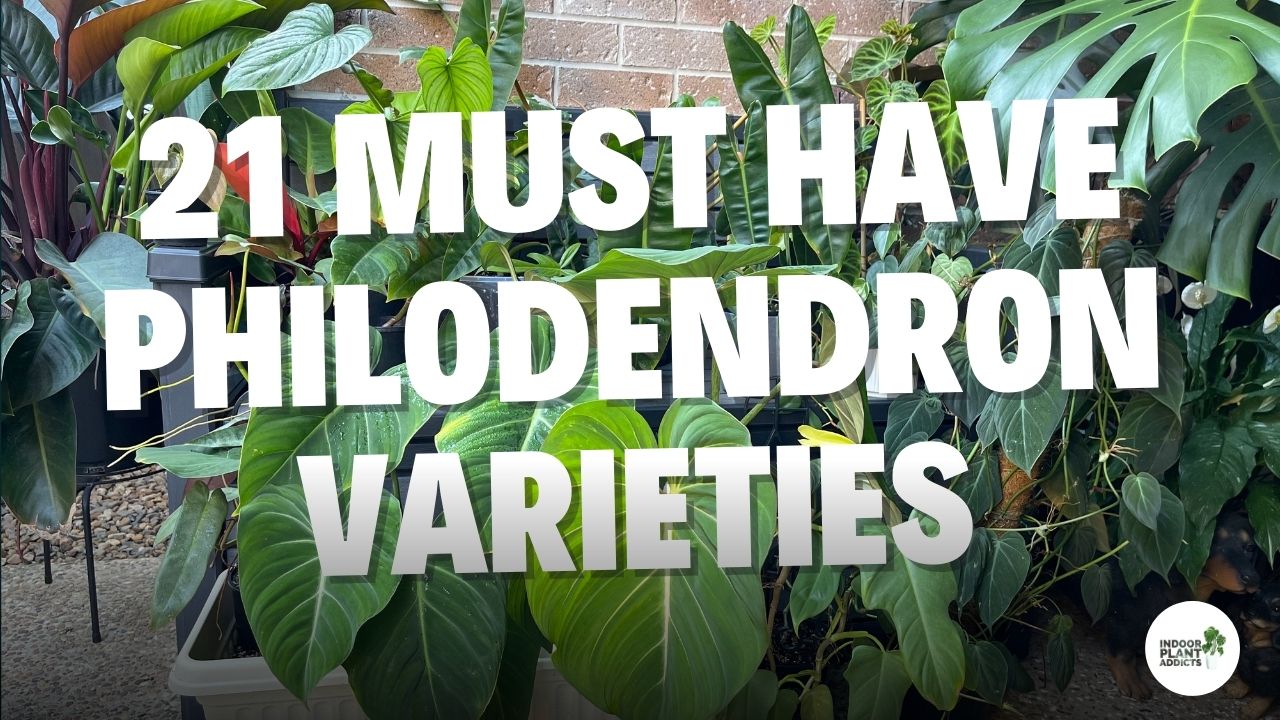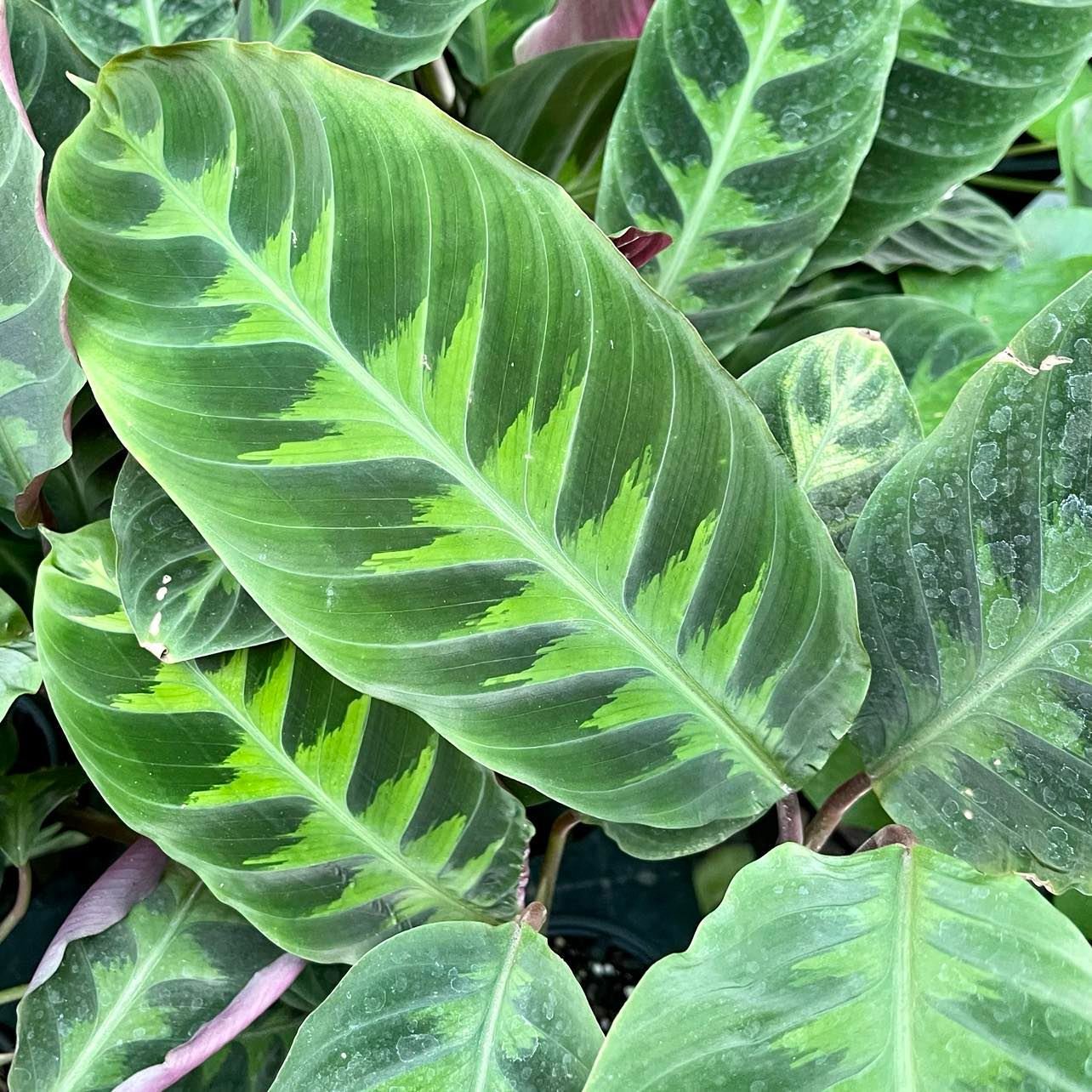The Alocasia Azlanii, also known as the Red Mambo or Dragon Scale Alocasia, is an eye-catching, rare tropical plant that is perfect for indoor plant enthusiasts. In this care guide, we will cover what you need to know to care for your Alocasia Azlanii, ensuring it thrives in your indoor environment.

Alocasia Azlanii Quick Overview
| Feature | Alocasia Azlanii Care |
| Identification | Dark green heart-shaped leaves with red veins and scalloped edges. |
| Size | Moderately-sized, up to 2-3 feet in height |
| Light Requirements | Bright, indirect light |
| Temperature Range | 65-80°F (18-27°C) |
| Humidity Requirements | 60-80% humidity |
| Watering Frequency | When top inch of soil is dry |
| Fertilizing | Balanced, water-soluble fertilizer at half strength every 4-6 weeks (spring and summer) |
| Soil | Well-draining, peat-based potting mix |
| Diseases & Pests | Root rot, spider mites, aphids, mealybugs |
| Toxicity | Toxic to humans and pets |
| Common Problems | Yellow leaves, brown edges, pale leaves, drooping leaves |
Identification
The Alocasia Azlanii is characterized by its dark green, heart-shaped leaves with striking red veins and a unique scalloped edge. The plant’s leaves have a texture similar to that of a dragon’s scales, hence the common name Dragon Scale Alocasia.
This plant can be easily distinguished from other Alocasias due to its unique leaf shape, color, and texture.
Size
Alocasia Azlanii is a moderately-sized indoor plant. Its leaves can grow up to 12 inches long and 6 inches wide. This plant exhibits a compact growth habit, with leaves emerging from a central stem, reaching outwards and upwards.
Over time, the Alocasia Azlanii can grow to a height of 2-3 feet, making it an ideal statement piece for any room.
Light Requirements
Alocaisa Azlanii thrives in bright, indirect light. Make sure to avoid exposing it to direct sunlight, as this can scorch the leaves causing permanent cosmetic damage.
Ideal locations for your Alocasia Azlanii include a north-facing window or a spot near an east or west-facing window with filtered light. If your home doesn’t provide enough natural light, consider using a grow light to supplement.
Temperature Requirements
Alocasia Azlanii prefers a temperature range of 65-80°F (18-27°C). Keep it away from cold drafts and avoid placing it near air conditioning vents or heaters. To maintain a consistent temperature, you can place your plant on a tray filled with pebbles and water, which will also help increase humidity.
Humidity Requirements
Being a tropical plant, Alocasia Azlanii loves high humidity levels of 60-80%. To maintain adequate humidity, consider using a humidifier or using a tray of water near the plant.
If the air is too dry, the leaves may develop brown, crispy edges – a telltale sign that the humidity needs to be increased. For more humidity tips, make sure to read our complete guide to humidity for indoor plants.
Watering Requirements
Water your Alocasia Azlanii when the top inch of the soil feels dry, ensuring the soil remains moist but not soggy. During the warmer months, you may need to water more frequently due to the increase of evaporation.
Yellow leaves are a sign of overwatering, while drooping leaves may indicate underwatering. Be mindful of seasonal changes, as your plant will likely require less water in the cooler months.
Fertilizing Requirements
Feed your Alocasia Azlanii with a balanced, water-soluble fertilizer diluted to half strength (to avoid over fertilizing) every 4-6 weeks during the growing season (spring and summer).
Avoid fertilizing during the dormant winter months. Signs of under-fertilization include slow growth and pale leaves, while over-fertilization can cause leaf burn and root damage.
Soil Requirements
A well-draining, peat-based potting mix is ideal for Alocasia Azlanii. You can create your own mix by combining equal parts peat moss, perlite, and orchid bark.
This will provide the plant with adequate aeration and moisture retention while preventing root rot. Adding a layer of mulch on top of the soil can help retain moisture and provide additional nutrients.
Diseases & Pests
Alocasia Azlanii can be susceptible to the following diseases and pests:
- Root rot: Caused by overwatering and poor drainage.
- Spider mites: Tiny pests that thrive in dry conditions and can cause leaf damage.
- Aphids: Small insects that feed on the sap, causing stunted growth and leaf curling.
- Mealybugs: White, fuzzy insects that can cause wilting and leaf drop.
To prevent and treat these issues, ensure proper watering practices, maintain adequate humidity, and inspect your plant regularly for signs of pests. If pests are detected, treat them with insecticidal soap or neem oil.
Toxicity
Alocasia Azlanii is toxic to both humans and pets due to the presence of calcium oxalate crystals. Ingestion can cause irritation and swelling of the mouth, throat, and gastrointestinal tract. Keep the plant out of reach of children and pets, and wash your hands after handling it to avoid skin irritation.
Alocasia Azlanii Common Problems
- Yellow leaves: Overwatering or poor drainage.
- Brown, crispy leaf edges: Low humidity or exposure to direct sunlight.
- Pale leaves: Under-fertilization or insufficient light.
- Drooping leaves: Underwatering or root rot.
Address these problems by adjusting your care routine, including watering frequency, humidity levels, light exposure, and fertilization.
Conclusion
With proper care, the Alocasia Azlanii can be a stunning and rewarding addition to your indoor plant collection. If you enjoy growing this unique plant, you may also be interested in other Alocasia varieties, such as Alocasia Polly, Alocasia Zebrina, and Alocasia Black Velvet.
Frequently Asked Questions
How often should I repot my Alocasia Azlanii?
Alocasia Azlanii should be repotted every 1-2 years or when it outgrows its current pot. Choose a pot with drainage holes that is 2 inches larger in diameter than the previous one.
Can I propagate Alocasia Azlanii?
Yes, you can propagate Alocasia Azlanii by division. Gently separate the plant’s rhizomes during repotting and plant them in separate pots with a well-draining potting mix.
Why are my Alocasia Azlanii’s leaves turning yellow?
Yellow leaves can be a sign of overwatering, poor drainage, or insufficient nutrients. Check your watering practices and ensure the pot has proper drainage.
How can I increase humidity for my Alocasia Azlanii?
You can use a humidifier, place a tray of water near the plant, or group it with other humidity-loving plants. Misting the leaves can also help, but make sure to do so in the morning to prevent the risk of fungal diseases.
Why are the leaves on my Alocasia Azlanii drooping?
Drooping leaves can be a sign of underwatering or root rot caused by overwatering. Check the soil moisture and adjust your watering routine accordingly. If the problem persists, inspect the roots for rot and trim away any affected parts before repotting in fresh soil.



